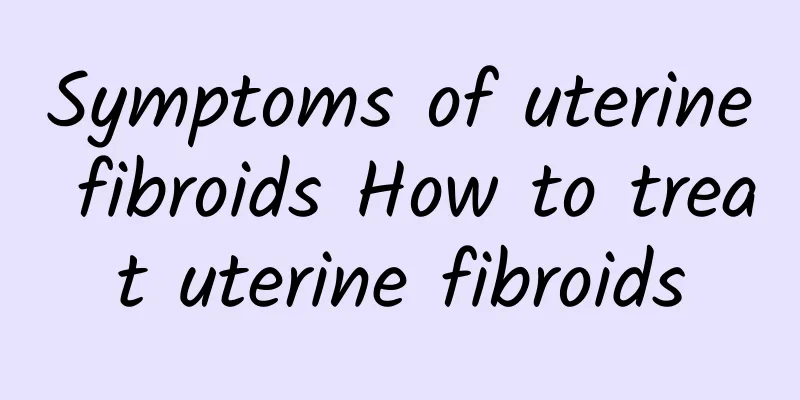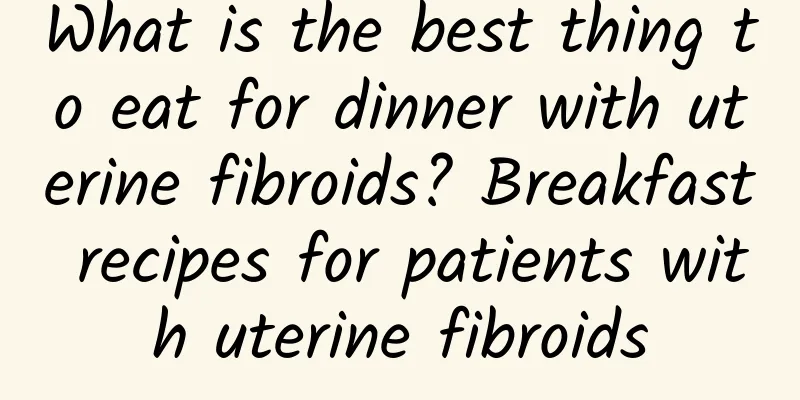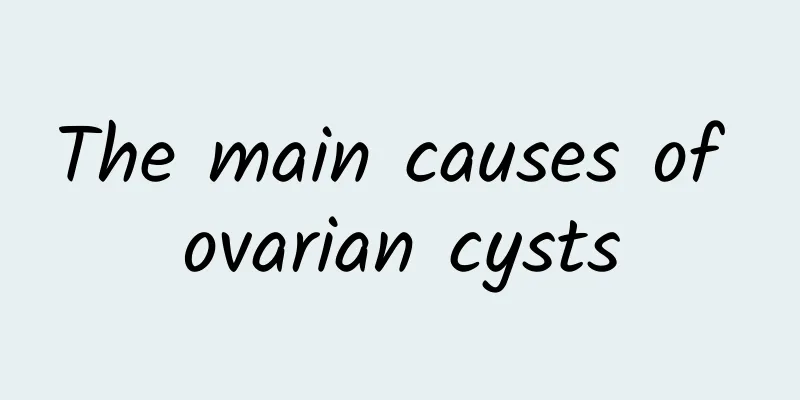Symptoms of uterine fibroids How to treat uterine fibroids

|
The exact cause of uterine fibroids is still unclear. They can occur alone or in many places and are the main killer of women's health. So, what are the symptoms of uterine fibroids? What is the treatment for uterine fibroids? Most patients with uterine fibroids are asymptomatic and are only occasionally found during pelvic examinations or ultrasound examinations. If there are symptoms, it is closely related to the growth site, speed, degeneration and complications of the fibroids, and is relatively small with the size and number of the fibroids. Patients with multiple subserosal fibroids may have no symptoms, while smaller submucosal fibroids often cause irregular vaginal bleeding or menorrhagia. Common clinical symptoms are: Uterine bleeding is the most common symptom of uterine fibroids, occurring in more than half of patients. Cyclic bleeding is the most common, and can manifest as increased menstrual volume, prolonged menstrual period, or shortened menstrual cycle. It can also manifest as irregular vaginal bleeding without menstrual cycle. Uterine bleeding is more common in submucosal fibroids and intramural fibroids, while subserosal fibroids rarely cause uterine bleeding. Generally speaking, uterine fibroids do not cause pain, but many patients may feel lower abdominal swelling and back pain. When the pedicle of the subserosal fibroids is twisted or the uterine fibroids undergo red degeneration, acute abdominal pain may occur. It is not uncommon for fibroids to be combined with endometriosis or adenomyosis, and there may be dysmenorrhea. If uterine fibroids are not treated in time, they can lead to female infertility, miscarriage, frequent urination, urination disorders and other hazards, and are the main killer of women's health. Uterine fibroids need to be treated in time. The following drugs can be used to treat uterine fibroids: (1) Danazol is used for preoperative medication or treatment of uterine fibroids that are not suitable for surgery. Uterine fibroids can grow after stopping the drug. Taking danazol can cause liver damage and androgenic side effects (weight gain, acne, deepening of the voice, etc.). (2) Tamoxifen can inhibit the growth of fibroids. However, long-term use may cause some patients' uterine fibroids to grow larger and even induce endometriosis and endometrial cancer, so this should be taken with caution. (3) Commonly used androgen drugs include methyltestosterone (methyltestosterone) and testosterone propionate (testosterone propionate), which can inhibit the growth of fibroids. Pay attention to the dosage to avoid masculinization. |
<<: How to treat intramural uterine fibroids? Do intramural uterine fibroids have to be removed?
>>: Treatment methods for uterine fibroids What are the sequelae of uterine fibroids
Recommend
Can cervical erosion be cured? Different degrees of cervical erosion require symptomatic treatment
Cervical erosion can be divided into mild, modera...
How to treat a cold after an abortion? It is recommended to treat a cold after an abortion.
Abortion has a great impact on women. It can easi...
Symptoms that often occur in patients with ectopic pregnancy
What are the symptoms that patients with ectopic ...
Uncover the causes of cervical hypertrophy and be a healthy woman
What are the causes of cervical hypertrophy? Cerv...
Women should not take it lightly: Symptoms of early pregnancy
Early pregnancy is one of the important reasons f...
What are the symptoms of uterine fibroids? Will uterine fibroids reduce menstrual flow?
There are many causes of uterine fibroids, most o...
Is vaginitis contagious?
Is vaginitis contagious? Experts say that sexual ...
What are the symptoms of adenomyosis?
The symptoms of adenomyosis are mainly irregular ...
Why pregnant women are prone to vulvar inflammation
There are many causes of vulvar inflammation, the...
Teacher Annie teaches you 3 yoga slimming tricks to easily create slender legs
Are you always dissatisfied with your body shape,...
How can patients with uterine fibroids recover after surgery?
How to recover after uterine fibroid surgery? Ute...
What is the best treatment for mild cervicitis?
What is the best treatment for mild cervicitis? A...
Can IUD cause cervicitis?
Insertion of an intrauterine device is the proces...
What causes cervical erosion?
Cervical erosion is one of the common gynecologic...
What are the best dietary treatments for cervicitis in women? Women with cervicitis can try three dietary treatments
Cervicitis is a gynecological disease that is ver...









